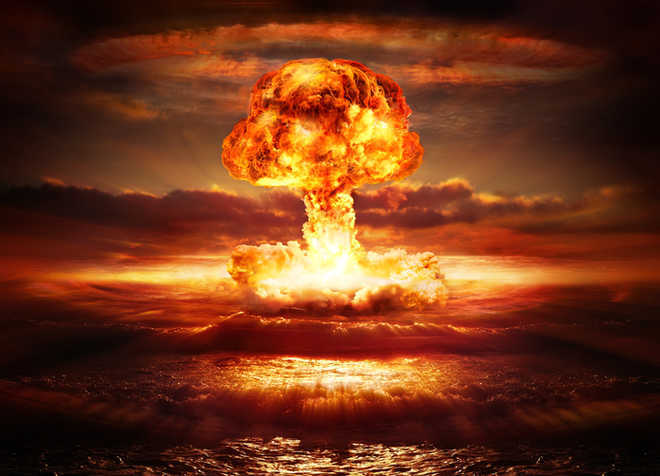
ISRO team predicts that the explosion created a cavity with a radius of 66 metres. — iStock
NEW DELHI
The 2017 nuclear test by North Korea shifted the ground by a few metres, and was 17 times more powerful than the bomb dropped on the Japanese city of Hiroshima in 1945, according to scientists from the Indian Space Research Organisation (ISRO).
Researchers led by K. M. Sreejith of the Space Applications Centre, ISRO in Ahmedabad, Gujarat noted that North Korea withdrew from the Treaty on the Non-Proliferation of Nuclear Weapons in 2003.
It subsequently developed nuclear weapons, with five underground nuclear tests culminating in a suspected thermonuclear explosion—a hydrogen bomb—on September 3, 2017.
The scientists, including Ritesh Agrawal and A S Rajawat from Geosciences Division, Space Applications Centre, ISRO, used satellite data to augment measurements of tests on the ground.
In the study, published in the journal Geophysical Journal International, the researchers noted that conventional detection of nuclear tests relies on seismic measurements using the networks deployed to monitor earthquakes.
However, there are no openly available seismic data from stations near this particular test site, meaning that there are big uncertainties in pinpointing the location and size of nuclear explosions taking place there.
In the latest study, Sreejith and his team turned to space for a solution.
Using data from the Japanese ALOS-2 satellite and a technique called InSAR, the scientists measured the changes on the surface above the test chamber resulting from the September 2017 explosion, sited at Mount Mantap in the northeast of North Korea.
InSAR uses multiple radar images to create maps of deformation over time, and allows direct study of the sub-surface processes from space.
The new data suggests that the explosion was powerful enough to shift the surface of the mountain above the detonation point by a few metres, and the flank of the peak moved by up to half a metre, the researchers said.
Analysing the InSAR readings in detail reveals that the explosion took place about 540 metres below the summit, about 2.5 kilometres north of the entrance of the tunnel used to access the test chamber, they said.
Based on the deformation of the ground, the ISRO team predicts that the explosion created a cavity with a radius of 66 metres.
It had a yield of between 245 and 271 kilotonnes, compared with the 15 kilotonnes of the ‘Little Boy’ bomb used in the attack on Hiroshima in 1945, according to the study.
“Satellite based radars are very powerful tools to gauge changes in Earth surface, and allow us to estimate the location and yield of underground nuclear tests,” Sreejith, lead author of the study, said in a statement.
“In conventional seismology by contrast, the estimations are indirect and depend on the availability of seismic monitoring stations,” he said.
The study demonstrates the value of space-borne InSAR data for measurement of the characteristics of underground nuclear tests, with greater precision than conventional seismic methods.
At the moment through nuclear explosions are rarely monitored from space due to a lack of data.
The team noted that currently operating satellites such as Sentinel-1 and ALOS-2, along with the NASA-ISRO Synthetic Aperture Radar (NISAR) mission—due to launch in 2022—could be used for this purpose. — PTI



























